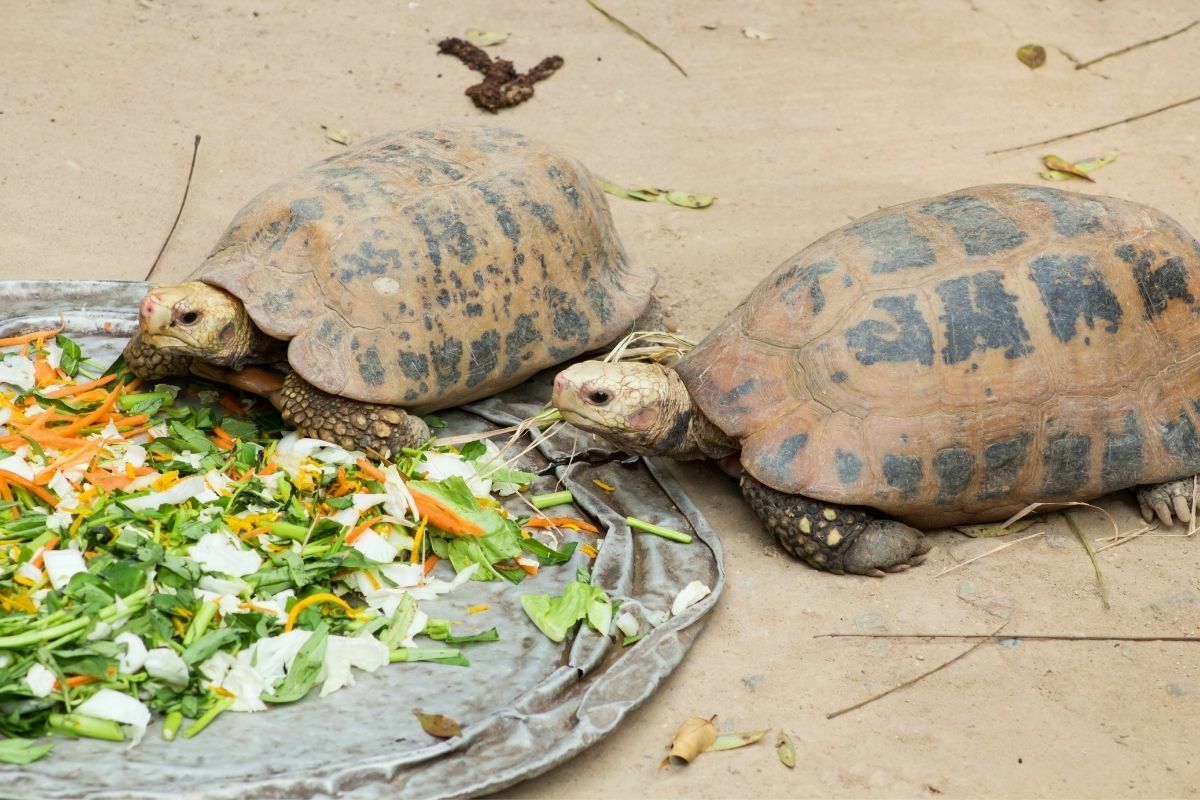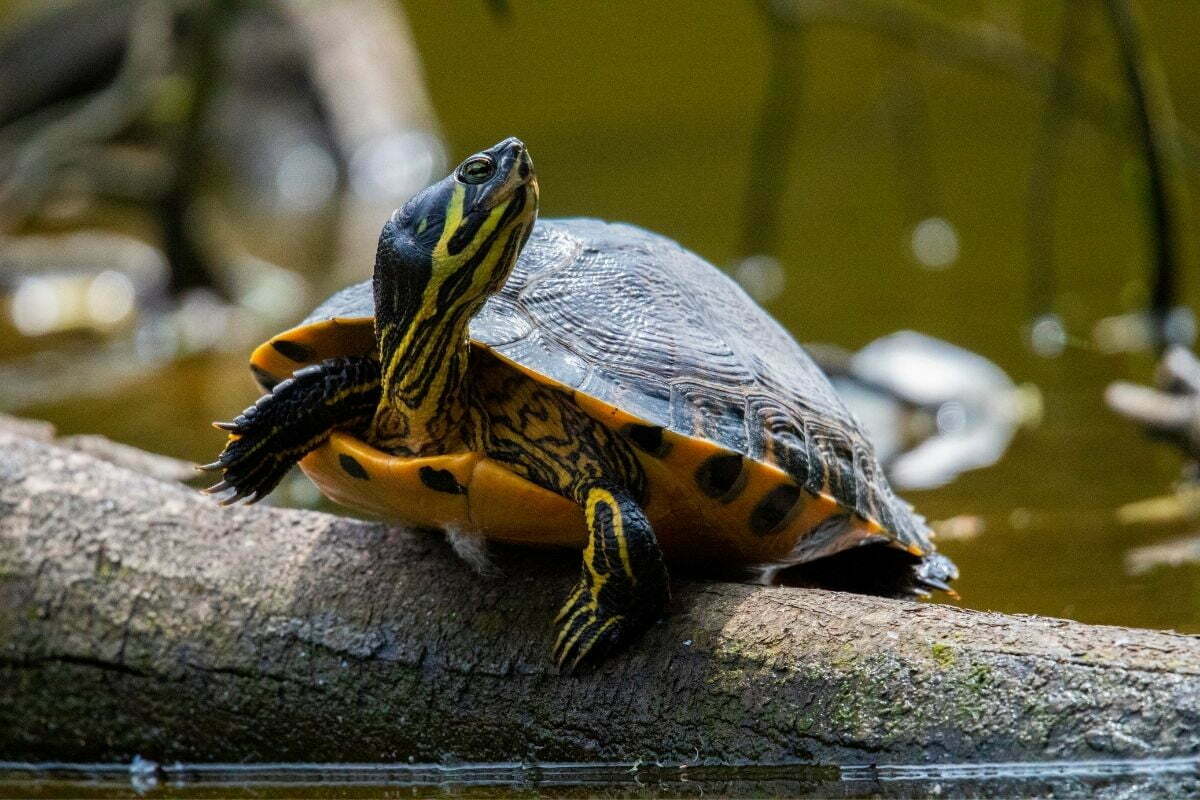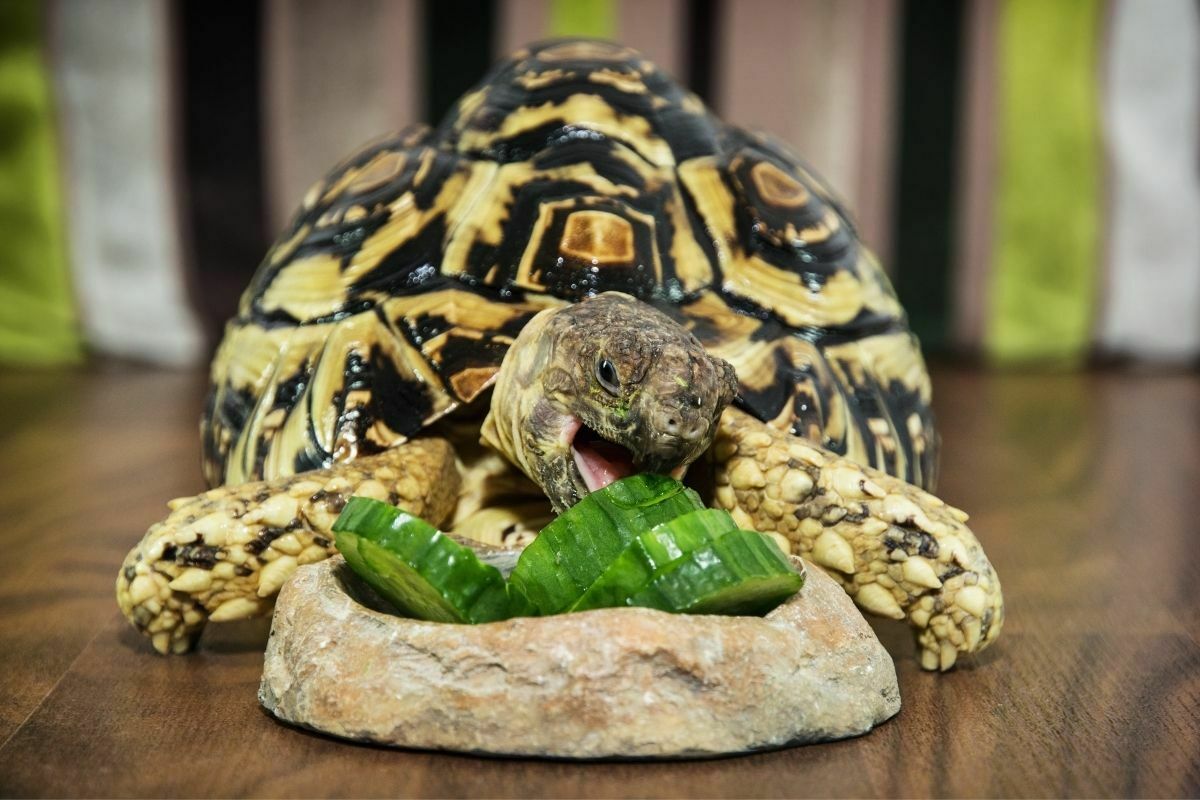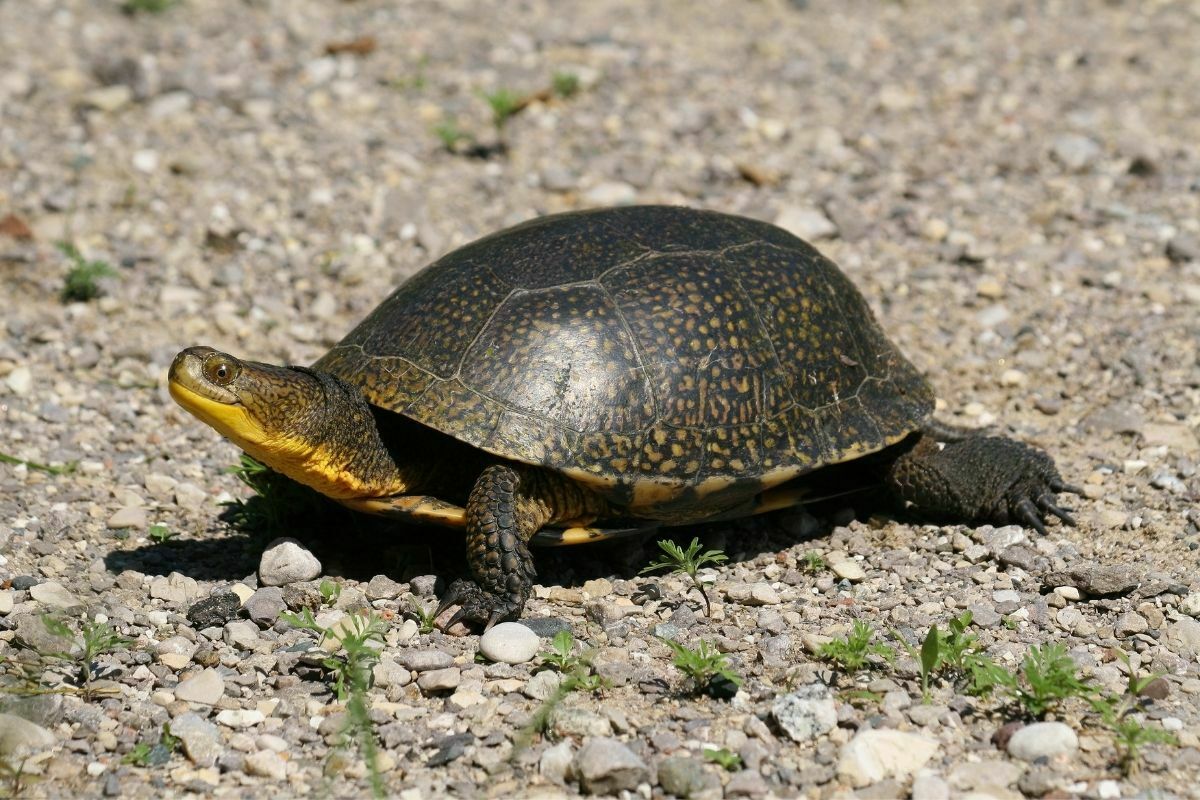Turtles come in all shapes and sizes, and there are over 300 different species of turtle out there.
Just like no two species of turtle are the same, there are no two matching turtle diets. So just, what do turtles eat – are they carnivores, herbivores, or omnivores?
If you’re wondering how different species of turtles compare in terms of their diet, then you’ve come to the right place!

In this article, we’ll take you through the many different diets of the world’s turtles, from the herbivorous giant Galápagos turtle to the carnivorous snapping turtle, as well as the foods these species eat and the ways that each species has adapted to their unique diets. So let’s jump right into it!
Types Of Turtles And What They Eat
There are many species of turtles in the world – more than 300, in fact! Just like humans, turtles come in all shapes and sizes. From the giant tortoises of the Galápagos to the smallest turtles that can fit into a pocket, there’s plenty of variety when it comes to the turtles of the world.
Turtles eat a variety of things depending on their species, and many factors can affect a turtle’s diet. These include their environment, age, size, and the types of animals and/or plants that exist in the turtle’s surroundings.
Because of the massive differences between all the species of turtles in the world, they eat a wide range of foods.
Most species of turtles are omnivorous – this means that they eat both plants and animals. The vast majority of turtles don’t eat ‘meat’ as we would normally think of it; instead mostly eat small insects and (in some cases) eggs.
Many other types of turtles are herbivorous, with their diets consisting entirely of plants, fruits, and vegetables. While they are less common, some species of turtles are carnivorous; they eat animals such as small fish, large kinds of worms, and even small mammals.
Some kinds of turtles have completely different types of diets based on their habitats.
For example, the hawksbill turtle’s small size and tropical environment mean that it only eats sea sponges, while the leatherback turtle has a diet based on invertebrates such as squids, jellyfish, and anemones.
These lie outside the typical classifications of carnivores, herbivores, and omnivores, and these turtles fit into completely different categories as a result (spongivore and gelatinivore, respectively).
As you can see, every turtle is different, and the same goes for what they eat. There isn’t one single diet you can assign to all types of turtles, and the food they eat is just as diverse as the many species of turtle that populate the earth.
How Have Turtles Adapted To Their Diets?
This amount of diversity in turtle’s diets comes with all sorts of evolutionary adaptations that help turtles to eat the right foods for themselves.
These differences range from the shape of their head and jaws to the design of their neck and shell. Some species of turtle have their own unique traits that give them a particular advantage when searching for their next meal.
Like with other types of animals, such as birds and mammals, the shape of a turtle’s skull and jaws is specifically adapted for what they eat. Carnivorous species have much sharper teeth and stronger jaws than herbivorous turtles, which allow them to catch and eat their prey.
Some turtles (like the painted turtle and the yellow-spotted river turtle) are surface skimmers that feed at the surface of the water and have developed ways to filter their food out of the water without swallowing it.
There are even some species that have unique and interesting ways to catch and eat their food. The alligator snapping turtle has a worm-like tongue that wiggles around to attract unsuspecting prey, at which point the turtle can catch its meal.
Common Omnivorous Pet Turtles

If you’re interested in getting a turtle as a pet but you don’t know what to feed it, then don’t worry. Here are some of the most common species of omnivorous turtles, along with some of the foods that they eat.
Yellow-Bellied Slider
The yellow-bellied slider is a semiaquatic species, and its diet reflects that fact with a mix of vegetation and aquatic insects. Yellow-bellied sliders typically eat water bugs, seeds, algae, and leaves that it gathers from both in and out of the water.
Eastern Box Turtle
Box turtles have a fairly even mix of plants and animals in their diets. While they will eat mushrooms, flowers, and fruits, a box turtle’s favorite meal is grubs, insects, and snails.
Painted Turtle
As mentioned earlier, the painted turtle is a surface skimmer. This means that it gathers its food by catching it on the surface of the water.
This means that their diet mostly consists of small invertebrates such as water insects; however, painted turtles also eat crustaceans, algae, and even some small fish.
Common Herbivorous Pet Turtles

While the majority of turtles are omnivorous, there are almost as many species that have a completely plant-based diet. Here are some of the most common herbivorous turtle species that people keep as pets.
Leopard Tortoise
This spotted-shelled tortoise enjoys high-fiber vegetation, with a diet mainly consisting of weeds and grass. Their favorite foods include dandelions, orchard hay, and clover.
Star Tortoise
This species of land turtle is named after its intricately-designed shell that forms a beautiful star-shaped pattern. Star tortoises like to eat dark leafy greens like kale, along with various types of grass such as Bermuda grass and Timothy hay.
What Types Of Turtles Are Carnivores?

Carnivorous turtles are by far the least common variety, although several species still have a completely meat-based diet. For example, many species of sea turtle only eat shellfish like crabs and shrimp, and even small fish.
The green sea turtle is mainly carnivorous from when it hatches all the way until adulthood, at which point it shifts to an entirely herbivorous diet.
While land turtles are largely herbivorous or omnivorous, species like the alligator snapping turtle are carnivores that eat anything that gets within reach of its sharp jaws.
Other carnivorous turtle species include the Blanding’s turtle, a semiaquatic species that eats snails and crayfish, and the African helmeted turtle, which eats anything from fish to lizards, even birds.
There are several species of carnivorous turtles; however, there aren’t any species of tortoise that exclusively eat meat, with most being completely herbivorous.
Frequently Asked Questions
What Foods Are Toxic To Turtles?
Just as giving your turtles the right foods for their diets, it’s just as important to avoid giving them the wrong foods. If you’re feeding your pet turtle, here are some foods that you should avoid at all costs.
Apart from the obvious dietary requirements regarding whether the turtle eats meat, plants, or both, some turtles have specific dietary requirements that mean they can’t eat certain things.
For example, the hawksbill turtle only eats sea sponges and will become ill if they eat other types of food.
Many foods are toxic to turtles, and you should ensure that your turtles won’t have access to these foods.
Avocados, ivy, and flowering plants such as amaryllis and hydrangeas are all poisonous to turtles. In contrast, notoriously poisonous plants like the nightshade family (which includes daffodils and petunias), holly, and foxglove, are all dangerous to your turtle’s health.
Check the dietary requirements of any turtle you own and make sure to feed them accordingly.
What’s The Difference Between Land Turtles And Tortoises?
Land Turtles and tortoises are commonly considered to be the same thing. While it is true that they are very similar, some key differences set the two types of turtle apart.
First, all types of tortoises are fully terrestrial; this means that they are adapted for life on land and spend all of their lives there. Many types of land turtles are semiaquatic, meaning they are able to live both on land and in the water.
Physically, the two are different as well. Tortoises can be identified by their stumpy legs, which look similar to an elephant’s. Land turtles, meanwhile, have a sort of fine-leg hybrid that allows them to walk as well as swim.
Land turtles also tend to have smoother, shallower shells to cut through water while swimming. As mentioned before, tortoises are completely herbivorous, while land turtles tend to be either omnivorous or even carnivorous.
It can be hard to tell the difference between land turtles and tortoises, and it can be impossible to know if you don’t know what to look out for. In fact, many land turtles (including the wood turtle and the box turtle) have often been mistaken for tortoises due to their similarities.
What Should You Feed Your Pet Turtle?
The right foods for pet turtles come down to their species. Depending on the variety of turtles you have, you may need to feed them dramatically differently.
If you aren’t sure which foods to give your turtle, check their dietary requirements and ask a vet or your local pet store for advice on feeding your pet.
If you’re trying to feed a wild turtle and don’t know exactly what species it is, then there are some safe bets you can give them, depending on their normal diet.
Omnivorous and herbivorous turtles are the easiest to cater to, as most of them will eat leafy greens with gusto.
Fresh veg like kale and collard greens are a great source of nutrients, while fruits such as melon and kiwi are great snacks to keep your turtle happy. Carnivorous turtles are a bit trickier to feed, but most will happily eat insects and worms.
Final Thoughts
So now you know a bit more about the many different foods that turtles can eat. We hope you’ve enjoyed taking a look at some of the different things that turtles can eat and understand how these incredible creatures are just as diverse as us.
There may not be a definitive answer to whether turtles are carnivores, herbivores, or omnivores. Still, the amount of variation in these species just goes to show how unique turtles truly are.
If you’re keeping a turtle as a pet, make sure you’re fully aware of what it needs to eat. A healthy turtle is a happy turtle, and giving it the food it needs will make sure that your little friend stays in good form for years to come.
